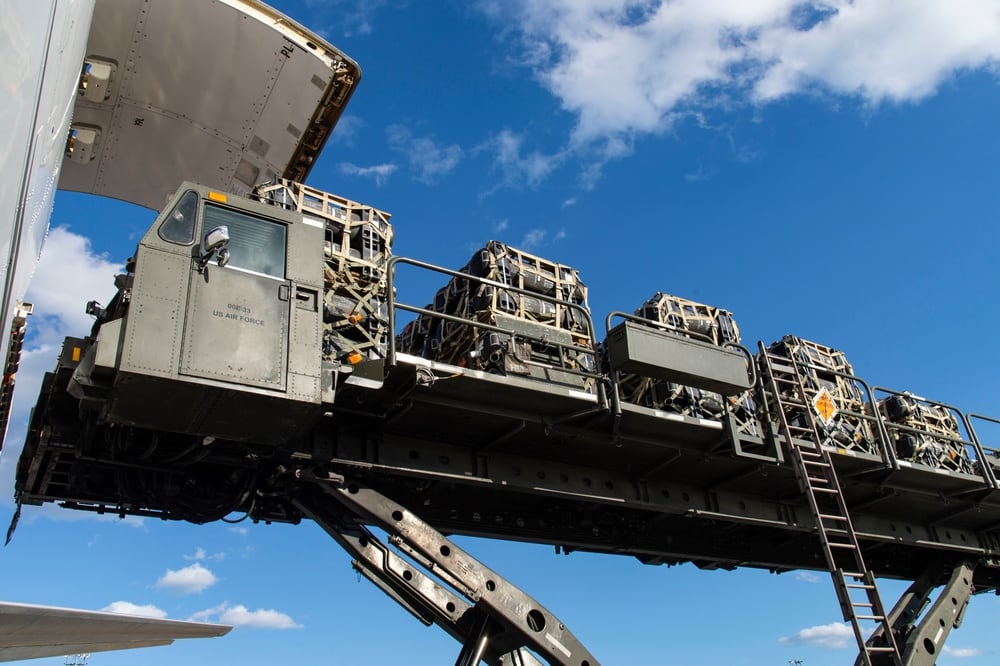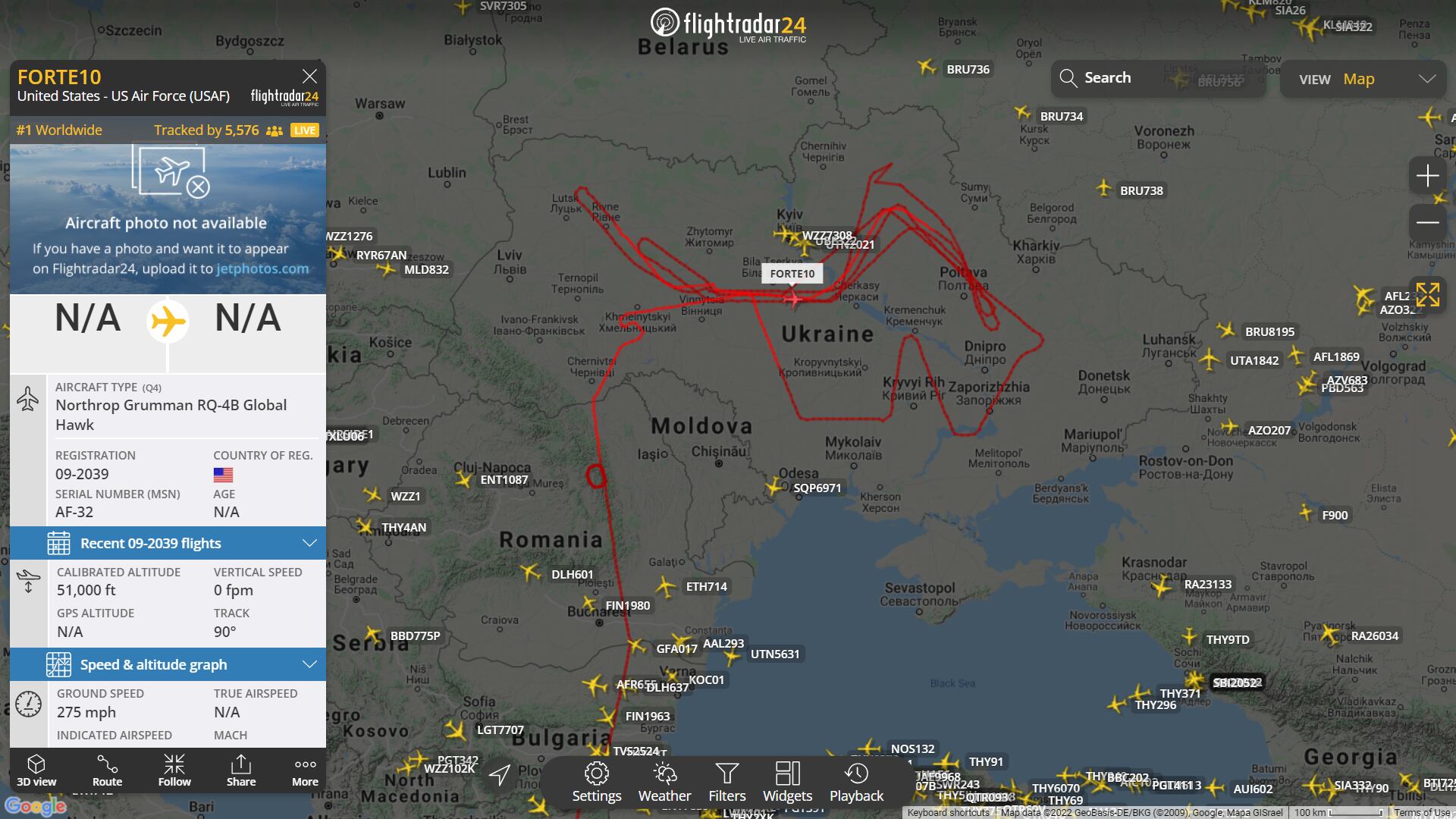Military experts in the U.S. are urging Western nations to bolster Ukraine’s air defenses, fearing that Russia will swiftly take over its former territory’s airspace in the opening moves of a possible invasion.
An air assault on Ukraine would test the limits of the U.S. and NATO’s willingness to remain active over a country they have scrambled to militarily assist in the past few months, they say. The outcome of a decision to fly into a worsening or expanding Russian offensive could reshape the military relationship between the Cold War adversaries and their allies for the first time in over three decades.
An initial onslaught of cyberattacks would likely be followed by air and missile strikes as an opening physical assault to control the skies, Seth Jones, who directs the international security program at the Center for Strategic and International Studies, wrote Jan. 13.

That would challenge Ukraine’s air defenses, a particularly weak point in a military aviation enterprise already outmatched by Russian capabilities.
“The Russian forces staging or available to be used against Ukraine … are wholly modernized and capable of dominating Ukraine’s defenses,” including through airstrikes and their own anti-aircraft weapons, wrote Wesley Clark, a retired four-star Army general who served as NATO’s supreme allied commander from 1997 to 2000, in a Jan. 14 Washington Post op-ed.
Ukraine’s sizable stockpile of anti-aircraft missiles are largely outdated and are Russian-built weapons, which that military knows how to evade, said Philip Breedlove, a retired four-star Air Force general who served as head of U.S. European Command and NATO’s supreme allied commander from 2013 to 2016.
Breedlove was also the Air Force’s vice chief of staff in 2011-2012 before commanding U.S. Air Forces in Europe until May 2013. He now works as a Europe expert with the Middle East Institute.
Foreign nations have provided Ukraine with shoulder-fired Stinger missiles that can shoot down aircraft but are typically only useful against helicopters or certain drones. That solves only a small part of the air power problem, Breedlove said.

Clark and Jones both urged the U.S. and NATO countries to send more air defense equipment to Ukraine without delay.
“Nations have a legitimate right to self-defense, and the United States and our allies have every right to provide such means now,” Clark wrote. “We should expedite the delivery of defensive means and insist that our NATO allies do likewise. No other act now can show more resolve to Putin.”
Another issue: a vulnerable air command-and-control enterprise that is geared to look west at the former Soviet Union’s foes, rather than east to modern-day Russia.
Ukraine owns Russian-made command-and-control systems, which makes them particularly susceptible to electronic jamming and attack by their creator, Breedlove said in an interview Thursday.
“I take you back to 2014, when the Russians invaded and occupied Crimea. When they flipped that switch to take over Crimea, they completely, absolutely, 100% disconnected the military garrisons in Crimea from Kyiv,” he said. “Some of that was electronic warfare.”
Ukraine still lacks the ability to move through each step of air operations, from sensing a threat and identifying what it is, to targeting and shooting at it, Breedlove added.
“In the face of a dedicated Russian attack, with Russian air forces bringing their full force down to bear on Ukraine, they would not be able to defend their sovereign airspace,” he said.

U.S. Air Force and allied tanker and transport planes continue to help move people and equipment into Ukraine and the wider region.
The service on Friday referred questions on the specifics of their activities to Pentagon headquarters, and Air Mobility Command spokesperson Lindsey Wilkinson declined to comment on any considerations for a last-minute evacuation effort.
“Air Mobility Command — like any military unit — plans and prepares for a wide array of contingencies and humanitarian events,” she said in an email.
Lessons learned from Operation Allies Refuge, the frantic effort to fly more than 124,000 evacuees out of Afghanistan as the country fell to Taliban extremists last summer, will inform the Air Force’s planning going forward, Wilkinson added.
The White House has warned Americans in Ukraine it would not rescue them if war breaks out before they leave. The State Department estimated that about 6,600 U.S. citizens wete in the country as of October, plus additional American travelers.
If an invasion does unfold, Breedlove doubts U.S. planes will offer much direct support, like airborne transport for the Ukrainian military. Intelligence, surveillance and reconnaissance support is more likely to last throughout a conflict, he said.

American spy planes, including RQ-4 Global Hawk drones and RC-135V/W Rivet Joints, have routinely patrolled Ukrainian airspace and nearby areas like the Black Sea for several weeks. Still, it’s unclear how much intelligence data the U.S. and NATO countries send to Ukraine.
The issue has raised concerns on Capitol Hill. A bipartisan group of Senate Intelligence Committee members wrote to President Joe Biden on Feb. 9 and pushed him to share as much information as possible with Kyiv.
The intent to gather useful data would remain, and possibly intensify, in an invasion, Breedlove said.
“The things I would be thinking about are, how do I adequately surveil such that I can help the Ukrainians?” Breedlove said. “That would begin to not only talk about Ukraine, but Belarus and the north part of the Black Sea.”
Intelligence-collection satellites may prove particularly important in an invasion, though Russia could try to jam their signals and blind their cameras. Breedlove believes drones and manned aircraft could still collect helpful information from a distance as well.
“We have often thought about how and where we could fly in a way that gives us coverage of international airspace and would make it an act of war for Russia to come out there and get them,” he added.
RELATED

The U.S. and NATO have begun reinforcing their attack aircraft in Eastern Europe, from American F-35A Lightning II fighter jets at Germany’s Spangdahlem Air Base to F-15E Strike Eagles at Poland’s Łask Air Base. But their role in what may come next is murky.
Clark recommended dispatching NATO air assets to Romania, Bulgaria and Poland as a precaution. Though some Eurofighters and foreign F-15 and F-16 fighter jet models are nearby to police NATO airspace — ideally to deter Russian military planes — he believes further air power would “reassure these allies and contain any spillover of Russian military action” into NATO territory.
“The time for this is now, before any action begins, rather than rushing forward in the face of Russian action, when the risks of accidental hostile encounters would be much higher,” he said.
Breedlove also suggested activating NATO’s Very High Readiness Joint Task Force, its most responsive military force that can mobilize within days in case conditions go south.
Experts differ on whether Russia would gamble with taking on U.S. or NATO aircraft in various scenarios.
Senior military fellows at the Atlantic Council argued Feb. 16 that Russia’s air-dominance training has signaled its willingness to engage outside aircraft if they try to intervene in Ukraine.
RELATED

Russian Tu-22 nuclear-capable bombers have recently patrolled the skies over Belarus, they noted. Training exercises can also shed light on possible moves in the future, including ground-attack practice with Su-25 planes on Feb. 10 and scrambling Su-35S fighters to capture and destroy an unresponsive air target seen as a stand-in for American or NATO jets.
“Advanced fighter aircraft and surface-to-air missiles Russia has deployed to Belarus provide the anti-access … “bubble” that covers much of the Ukrainian airspace — a further warning against any NATO nation entering Ukrainian airspace in the event of further hostilities,” the Atlantic Council fellows wrote.
Breedlove questions whether Russian President Vladimir Putin would give the U.S. a reason to return fire, inside Ukrainian borders or in broader Europe. The decision to shoot back would be left up to Biden, the commander in chief, and NATO Secretary General Jens Stoltenberg, he said.
“[Putin] knows where he can go and stay below the line of NATO’s response. I think that tripping the NATO wire is not something he wants to do,” Breedlove said, declining to speculate further.

To keep Russia on its toes, the retired Air Force general favors turning the regional air policing mission into one of air defense. He believes the rules of engagement governing what pilots can do during air policing are “wholly inadequate” outside of peacetime.
Fighter jets are tasked with identifying and addressing renegade aircraft, such as when American and European fighters intercepted Russian military jets that veered near their airspace over the Baltic Sea and in the High North on Feb. 3. Yet they can’t fire unless fired upon when flying over a foreign country, he said.
For now, experts want to see more firepower — like F-35s, F-22 Raptor jets and naval cruisers or destroyers — spread across Europe.
“[Putin is] most afraid of NATO forces, capabilities and weapons in the forward area, so that’s what I’d give him,” Breedlove said. “I would send him a message: ‘Your bad behavior is going to cost you what you most did not want.’”
Rachel Cohen is the editor of Air Force Times. She joined the publication as its senior reporter in March 2021. Her work has appeared in the Washington Post, the Frederick News-Post (Md.), Air and Space Forces Magazine, Inside Defense, Inside Health Policy and elsewhere.




